Wonderful introduction:
Let your sorrows be full of worries, and you can't sleep, and you can't sleep. The full moon hangs high, scattered all over the ground. I think that the bright moon will be ruthless, and the wind and frost will fade away for thousands of years, and the passion will fade away easily. If there is love, it should have grown old with the wind. Knowing that the moon is ruthless, why do you repeatedly express your love to the bright moon?
Hello everyone, today XM Foreign Exchange will bring you "[XM Foreign Exchange Market Analysis]: U.S. Treasury yields rise, short-term trend analysis of spot gold, silver, crude oil and foreign exchange on May 6". Hope it will be helpful to you! The original content is as follows:
The three major futures indexes all fell, Dow futures fell 0.66%, S&P 500 futures fell 0.8%, and Nasdaq futures fell 1.06%. Major European stock indexes fell more than they rose, Germany's dax30 fell 1%, French Cac fell 0.23%, and Russia's market value-weighted index rose 1.48%.
⑴ The yield on the 10-year U.S. Treasury bond rose to about 4.37% on May 6, the highest level in two weeks. Investors closely monitor trade tensions and wait for the decisions of the Federal Reserve's Monetary Policy Committee (FOMC) tomorrow. ⑵ The market generally expects the Federal Reserve to keep the federal funds rate unchanged, but investors will pay attention to its signals on future policy directions and its assessment of the economic impact on Trump's trade policy. ⑶ Trade negotiations between the United States and some Asian countries are expected to restart this week, but negotiations related to China seem to be at a deadlock. ⑷ In terms of data, the American Society of Supply Management (ISM) service industry report showed a sharp expansion of activity and increased cost pressure, echoing last week's strong employment report. ⑸ However, the negative impact of trade tensions on the economy remains, including a contraction of GDP in the first quarter, a surge in imports before new tariffs and a sharp decline in port freight volumes.
Wheat futures regain its rise as forecasts show that the weather risks faced by U.S. winter wheat and spring wheat crops are rising. According to CommAccording to odityWeatherGroup, about 20% of hard red winter wheat producing areas in the Great Plains of the United States will continue to drought. In addition, wheat crops in Texas and Oklahoma are expected to experience flooding this week and next week. Meanwhile, spring crop seeding in the Delta and Southeast regions is expected to be disrupted by Friday. Nevertheless, the situation of winter wheat crops in the United States was still improving over the same period last year as of May 1, with about 51% of crop conditions considered to be at a good to excellent level. As of April 29, fund managers held net short positions in Chicago wheat futures reached their highest level in nearly two years.
Iran's Noor News Network quoted sources on the 6th local time that the fourth round of Iran-US nuclear negotiations will be held in Muscat, the capital of Oman on May 11. The Iranian Ministry of Foreign Affairs has not confirmed this news yet. On the 5th, Iranian Foreign Ministry spokesman Bagae said at a regular press conference that the postponement of the fourth round of indirect negotiations on the Iran-US nuclear issue was based on the proposal of the mediator Oman, and all parties are waiting for Oman's follow-up arrangements.
According to people familiar with the matter, the EU plans to impose additional tariffs on about 100 billion euros ($113 billion) of US goods. The proposed retaliation measures will be shared with member states as early as Wednesday, with consultations continuing for a month before finalizing the list, people familiar with the matter said. Earlier media reports said that the European Commission is expected to share a document with the United States this week in an attempt to initiate negotiations. The EU's proposals are expected to include lowering trade and non-tariff barriers and increasing investment in the United States. Negotiations between the EU and the U.S. officially began last month, but progress was minimal, with most of the U.S. tariffs are expected to remain unchanged. The EU said on Tuesday that Trump's ongoing trade investigation would increase the amount of goods facing tariffs to 549 billion euros.
⑴ According to sources, Russia's ESPO mixed crude oil exports in May are expected to be 4.2 million tons, or about 1.02 million barrels per day, an increase from 3.8 million tons in April. ⑵ Calculated on a daily basis, ESPO mixed crude oil exports in May will increase by 7% compared with April. ⑶This export volume is close to the record set last year, as Russia is working to expand its exports eastward after the EU reduces its purchase of its crude oil. ⑷ESPO mixed crude oil is Russia's flagship light crude oil variety, mainly transported from the Port of Kozmino to the Asian market, especially favored by Chinese refineries. ⑸ Recently, the freight rates for ESPO mixed crude oil have dropped to the lowest level since January this year, which will also help Russia increase the export volume of this variety.
⑴ According to Reuters, the globalAccording to a survey by foreign exchange strategist, most people believe that the dollar's safe-haven attractiveness is declining and the dollar is expected to depreciate further in the next year, mainly due to concerns about the recession. ⑵ The dollar index (.DXY) has fallen nearly 9% since Trump returns to the White House, and its capricious tariff policy has severely hit investor confidence. ⑶ Although the Trump administration announced a 90-day tariff exemption period on April 2, this did not effectively boost the dollar. ⑷ More than 55% of respondents (83 out of 46) expressed concern about the US dollar's safe-haven status, a significant increase from about one-third of the survey in April. ⑸ Steve Englander, head of global G10 foreign exchange research at Standard Chartered Bank, said that market confidence in the US dollar is being weakened and investors' concerns about the long-term fiscal path of the United States have intensified. ⑹ Although the euro is currently close to a three-year high against the dollar, the median of more than 70 forecasters in the survey expects the euro not to rise further before the end of May or July. ⑺Nearly 80% of strategists (59 out of 47) expect that by the end of May, the U.S. Commodity Futures Trading Commission's net short position in the U.S. dollar will decrease or remain unchanged. ⑻ The dollar against the euro is expected to rise to 1.14 in 6 months and 1.16 in 12 months, the largest annual monthly forecast increase since November 2010.
⑴ The Swedish central bank will hold a meeting this week. Given the uncertainty of domestic economic growth and inflation, it is expected to adopt a wait-and-see attitude. ⑵ Swedish manufacturing industry performed unexpectedly, indicating that the US trade policy remarks have limited impact on Sweden. ⑶ However, uncertainty in financial markets and central bank policies is mainly driven by external factors. Although the Swedish Krona has recovered healthily to the euro since February, the Swedish central bank will not shake the currency market by cutting interest rates this week. ⑷ Analysts have different views on the Swedish central bank's policy direction, with some emphasizing growth priority, while others pointing out inflation is too high, with interest rate expectations for the rest of the year ranging from 1.75% to 2.25%. ⑸ Faced with the dilemma of growth and inflation, the Swedish central bank may be cautious, maintaining the benchmark interest rate at 2.25% this week and may remain unchanged for the rest of 2025.
⑴European natural gas prices rebounded to above 34 euros/mWh in midday trading, and the benchmark Dutch TTF natural gas futures contract rose 4.3% to 34.36 euros/mWh. ⑵ Investors are paying attention to the fierce competition for liquefied natural gas (LNG) in Asia, and the lower prices have attracted some buyers to return to the market. ⑶ The price of liquefied natural gas in North Asia rebounded to above US$11/million BHT units, and last week the price fell below US$10/million BHT units. ⑷ The EU is expected to release a roadmap later on Tuesday explaining how to stop importing energy from Russia.
⑴MayOn the 6th, the benchmark prices of Middle East crude oil (Oman, Dubai and Murban) rebounded to a weekly high as Saudi Arabia slightly raised the official crude oil price (OSP) for Asian buyers in June. ⑵ Saudi Arabia raised the official June price of its flagship Arab Light crude oil by 20 cents per barrel to $1.40, higher than the average price of Oman and Dubai, in line with market expectations. ⑶ On Tuesday, crude oil prices rose by more than $1.50 per barrel due to technical factors and buying on dips. Previously, OPEC+'s decision to increase production caused prices to fall in the previous trading day, and market concerns about oversupply remained. ⑷Dubai's cash price premium to swaps rose to a one-week high, reaching US$1.24 per barrel.
⑴ The Swiss central bank is in a difficult situation under the current external environment. Switzerland is facing multiple problems such as geopolitics, weakening European demand, strong Swiss franc and tariffs, Swiss National Bank Chairman Schlegel pointed out. ⑵In view of this, if the Swiss franc further appreciates to the euro or the Japanese yen, the risk-return ratio will tend to weaken the Swiss franc. ⑶The latest inflation rate in Switzerland has dropped to 0%, lower than the Swiss National Bank's expectations of 0.3%. The recent strengthening of the Swiss franc further increased the risk of deflation. ⑷ To deal with these risks, the Swiss National Bank has limited options, with a policy interest rate currently at 0.25%, and may implement negative interest rates again. Although central banks may also interfere in the foreign exchange market, the current U.S. trade policy pathway may limit its willingness to intervene. ⑸ The euro-Rui Franc level around 0.92 was once considered a region where the Swiss National Bank might take action. If the exchange rate returns to this level, it may be an opportunity to buy on dips.
⑴ The euro zone economy continued to expand in April, but the growth rate slowed down significantly, demand weakened, and the dominant service industry almost stagnated, indicating that the region's economic recovery is still fragile. ⑵ HCOB euro zone comprehensive PMI output index compiled by S&PGlobal fell to 50.4 from 50.9 in March, only slightly above the 50 boom line. ⑶ The service industry PMI fell from 51.0 in March to 50.1, the lowest level in five months. Corporate optimism weakened, and the business expectations index fell from 57.8 to 55.1, the lowest level since the end of 2022. ⑷ Overall demand fell for the 11th consecutive month, and the decline was slightly faster than in March, with both manufacturing and service providers reporting weak sales. The new order index fell from 49.5 to 49.1. ⑸ Despite weak economic growth, the number of employment in the euro zone has increased for the second consecutive month, but the increase is weak, and it is limited to the service industry, while the manufacturing industry has laid off employees for the 23rd consecutive month. ⑹The euro zone is significantly partialized, with Ireland leading the PMI of 54.0, but it is the lowest level in two months; Spain is 52.5, Italy is 52.1, a record high of 11 months; Germany only expanded slightly, with a PMI of 50.1, while France continues to shrink, with a PMI of 47.8.
⑴ Germany's 10-year government bond yield fell after rising early, but remained above 2.5%, as Berlin's political uncertainty had an impact on investor sentiment. ⑵ Prime Minister candidate Friedrich Mertz was unexpectedly frustrated in the preliminary Bundestag vote, receiving only 310 votes, lower than the required 316 votes. ⑶ Although Mertz plans to lead a coalition government composed of his CDU/CSU group and SPD, he faces the dilemma of insufficient public support, while backgrounds such as economic stagnation, Ukrainian conflict and rising U.S. tariffs have also increased challenges. ⑷ Investors are also concerned about key policy decisions of the U.S. Federal Reserve and the Bank of England. The Fed is expected to keep interest rates unchanged after a strong April jobs report, while the Bank of England may cut rates due to the impact of U.S. trade policy.
Euro/USD: As of 20:20 Beijing time, the euro/USD rose, and is now at 1.1331, an increase of 0.15%. Before the New York Stock Exchange, the price of (Euro-USD) rose in recent intraday trading, trying to unload some of the obvious oversold levels on (RSI), especially with the emergence of positive signals to retest the key resistance of 1.1340 while reaching the EMA50 resistance, with bear correction waves dominating on a short-term basis.
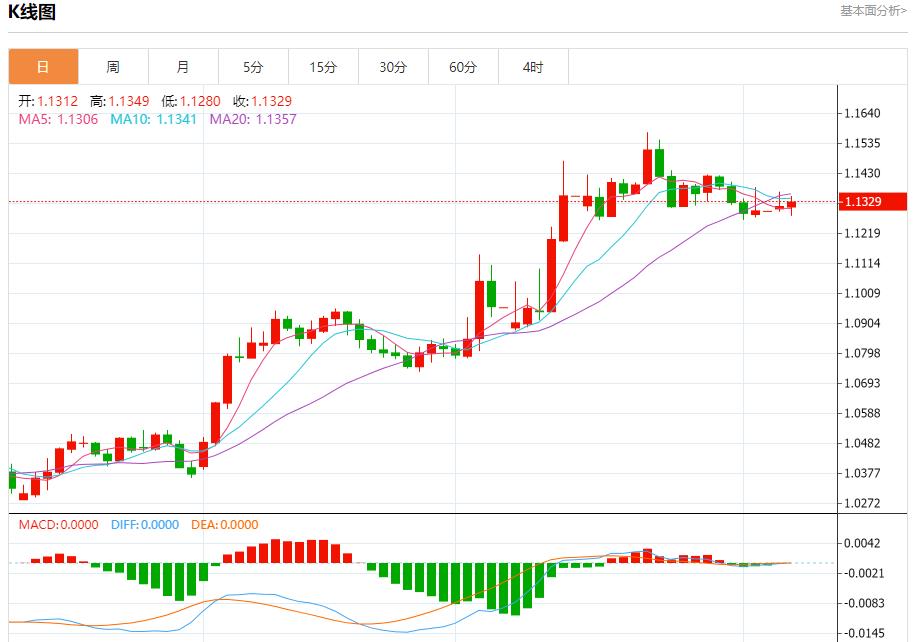
GBP/USD: As of 20:20 Beijing time, GBP/USD rose, now at 1.3378, an increase of 0.61%. Before the New York Stock Exchange, (GBPUSD) fell in recent intraday trading, keeping moving within the bear correction wave on a short-term basis, trading along the bias line, as the technical pressure from trading below the EMA50 continues, increasing the pressure as negative signals on the (RSI), strengthening the possibility of continued decline in the upcoming trading.
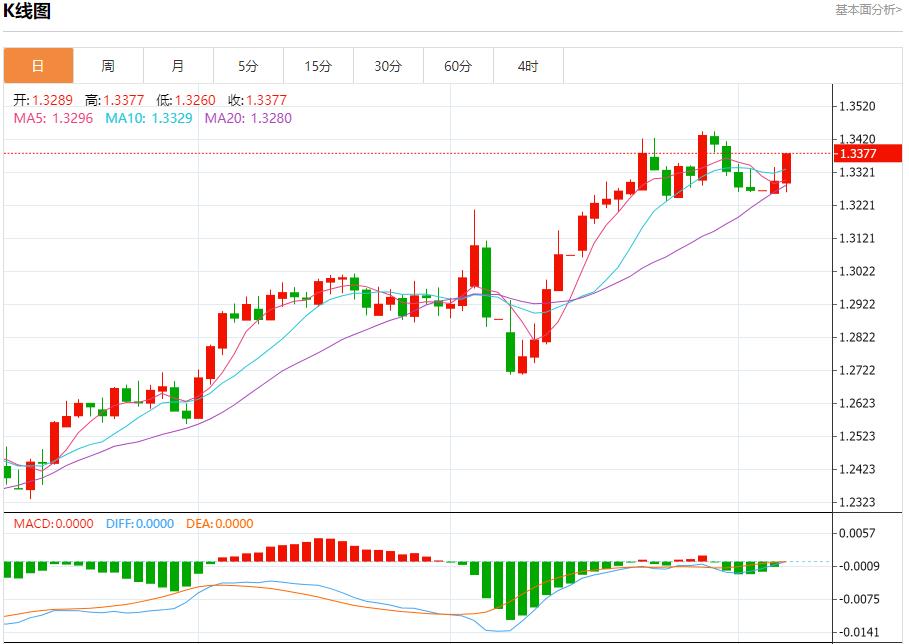
Spot gold: As of 20:20 Beijing time, spot gold rose, now at 3377.29, an increase of 1.31%. Before New York, gold prices returned to the upside in recent intraday trading, with major short-term bullish trends dominating, and the positive support caused by its trading above the EMA50 continues, on the other hand, we noticed negative signals on the aftermath (RSI), which could reduce earnings in the upcoming trading.
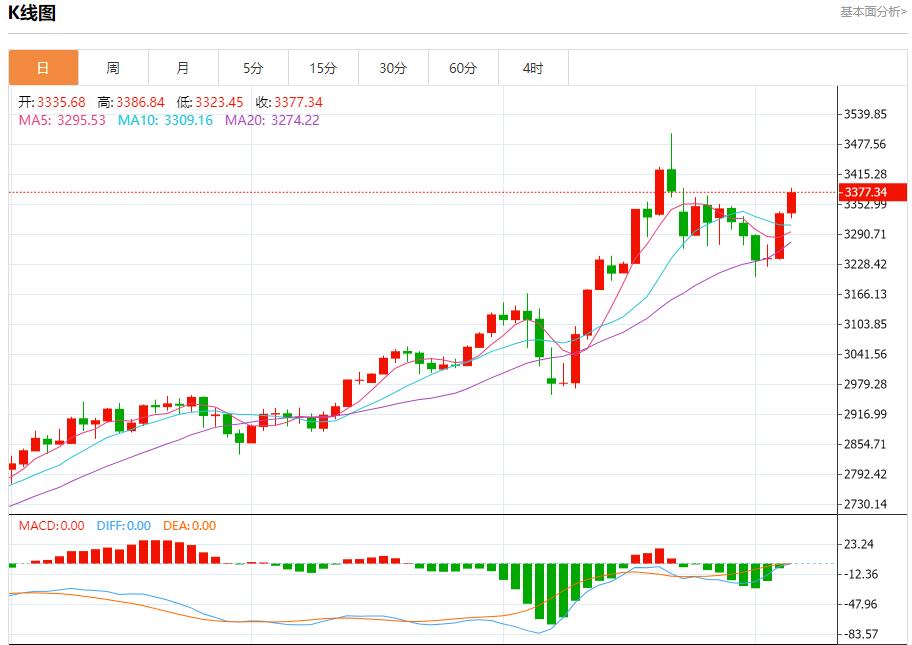
Spot silver: As of 20:20 Beijing time, spot silver rose, now at 33.047, an increase of 1.83%. Before the New York Stock Exchange, silver prices fluctuated in day trading, trying to collect the gains from their last rise to collectPossibly helping it recover the positive force, supported by its trading above the EMA50 and dominated by bullish correction trends on a short-term basis and trading along the slash, despite reaching overbought levels, in addition to positive signals on (RSI).
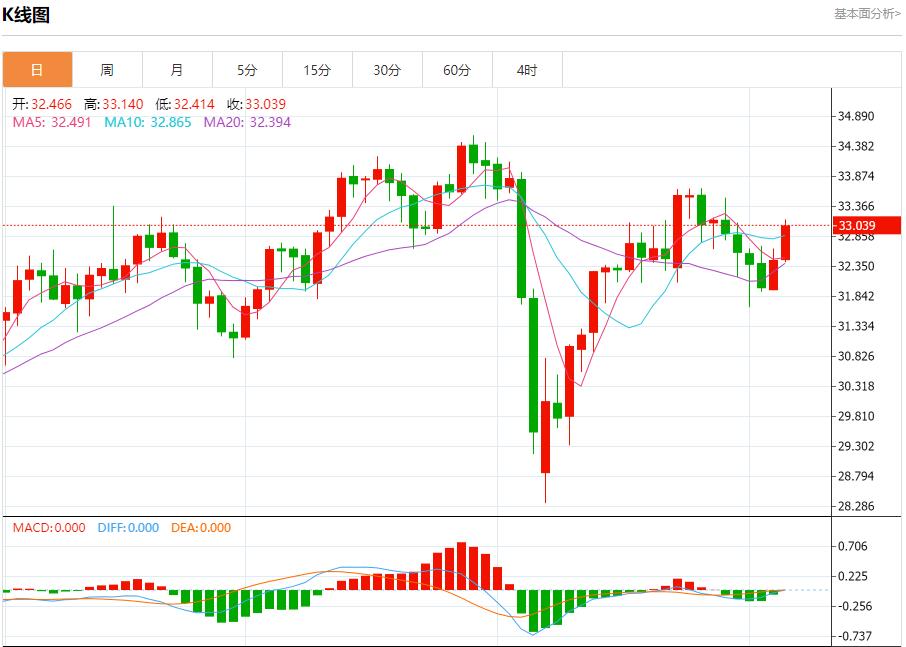
Crude oil market: As of 20:20 Beijing time, U.S. oil rose, now at 58.680, an increase of 2.73%. Before New York, crude oil prices rose in recent intraday trading, supported by positive signals on (RSI) to successfully break through a slight bearish slash on the short-term basis, and negative pressure from trading below the EMA50 remains in effect, which may reverse these gains at any time and RSI reaches overbought levels.
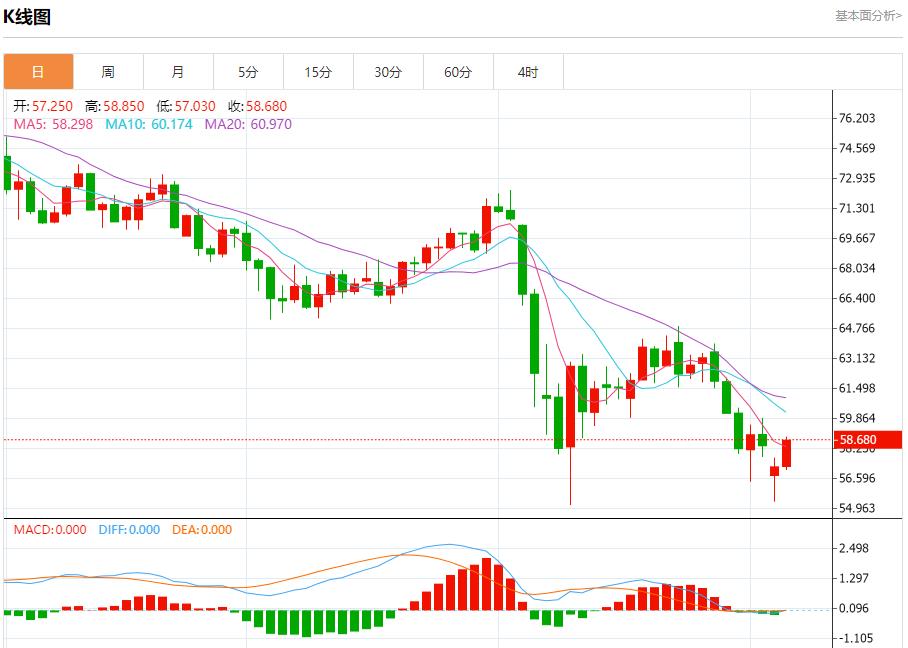
⑴ Economists in the HSBC research department pointed out in their report that Trump's tariff policy has subverted the global trade pattern. ⑵Asian manufacturing PMI data in April showed that both production and employment sub-indexes slowed, which is an initial sign of the impact of tariff policies on regional economy. ⑶In addition to India and Singapore, new export orders in Asia have dropped sharply, but early orders may keep the data firm in the next one or two months. ⑷HSBC believes that if India negotiates to reduce tariffs, it may benefit from supply chain changes and gain further price competitiveness compared to China.
The above content is all about "[XM Foreign Exchange Market Analysis]: US Treasury yields rise, short-term trend analysis of spot gold, silver, crude oil, and foreign exchange on May 6", which was carefully compiled and edited by the XM Foreign Exchange editor. I hope it will be helpful to your trading! Thanks for the support!
Life in the present, don’t waste your current life in missing the past or looking forward to the future.